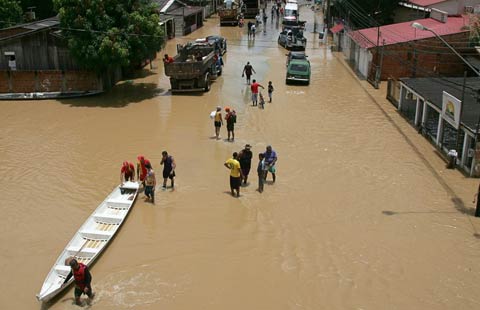One year later: Benefits from the search for MH370
Updated: 2015-03-06 14:28
(Agencies)
|
||||||||
The yearlong search for Malaysia Airlines Flight 370 has turned up no sign of the plane, but that doesn't mean it's been unproductive.
It has yielded lessons and discoveries that could benefit millions, including coastal Australians, air and sea travelers and scientists trying to understand ancient changes to the earth's crust.
The Associated Press writers sum up what searchers and investigators have learned so far.
New underwater maps
In the Indian Ocean west of Australia, where experts believe the plane crashed, scientists have been mapping the sea floor to aid in the search for wreckage.
Previous maps relied on satellite data, which gave only rough estimates of the ocean's depth. Now, using sonar readings from ships, scientists have mapped an area the size of Nebraska and have discovered previously unknown trenches and underwater mountains that rival the height of any on Australia's surface.
Searchers are getting even more detailed sonar readings using small underwater vehicles called "towfish" that are towed just above the sea floor.
Scientists from around the world are eagerly anticipating the release of the three-dimensional maps and data once the search is completed.
Better tsunami prediction
Stuart Minchin, a divisional chief at Geoscience Australia, said that when the maps are released and further analyzed, they will give scientists a better understanding of areas that during earthquakes are susceptible to underwater landslides, which can create or exacerbate tsunamis.
He said the information will help scientists pinpoint areas along Australia's west coast that are particularly vulnerable to tsunamis and enable better warnings and predictions for coastal residents.

 Culture Insider: 6 things you may not know about Awakening of Insects
Culture Insider: 6 things you may not know about Awakening of Insects
 Top 10 favorite gift brands of rich Chinese men
Top 10 favorite gift brands of rich Chinese men
 Buddha statue with mummified monk is museum draw
Buddha statue with mummified monk is museum draw
 Snowstorm rages in eastern US
Snowstorm rages in eastern US
 Across Canada March 4
Across Canada March 4
 Seven things you may not know about Lantern Festival
Seven things you may not know about Lantern Festival
 Top 10 destinations for Chinese tourists
Top 10 destinations for Chinese tourists
 Floods displace over 2,000 in Brazil
Floods displace over 2,000 in Brazil
Most Viewed
Editor's Picks

|

|

|

|

|

|
Today's Top News
US fails to grasp China's terror laws: legislature
Militaries' cooperation 'key' in ties
China, California address climate, energy issues
US companies bullish on China
China faces 'formidable challenges', says Li
Diplomats talk about 'two sessions'
GDP target drops to 7%
US ambassador to S.Korea attacked
US Weekly

|

|









